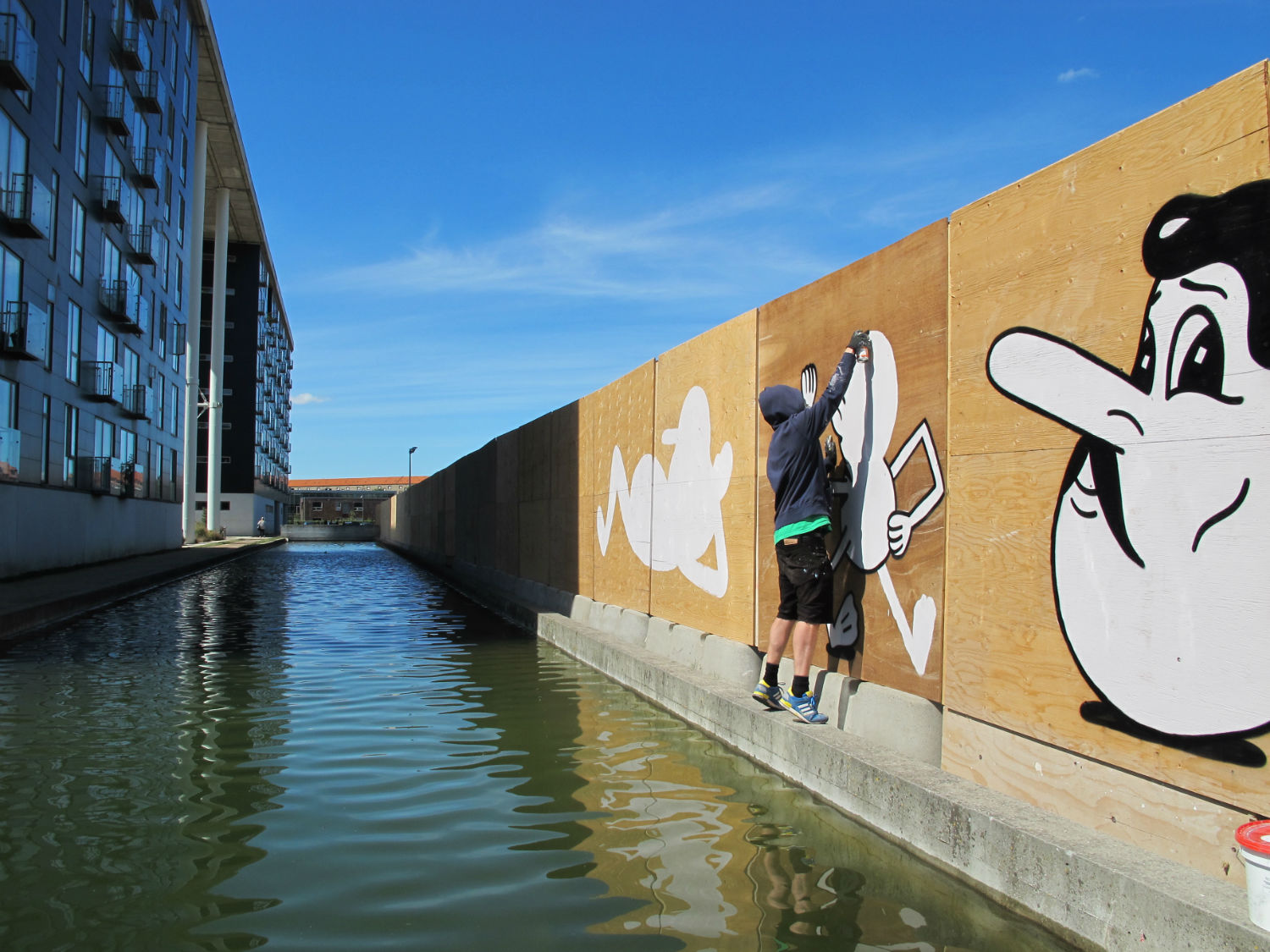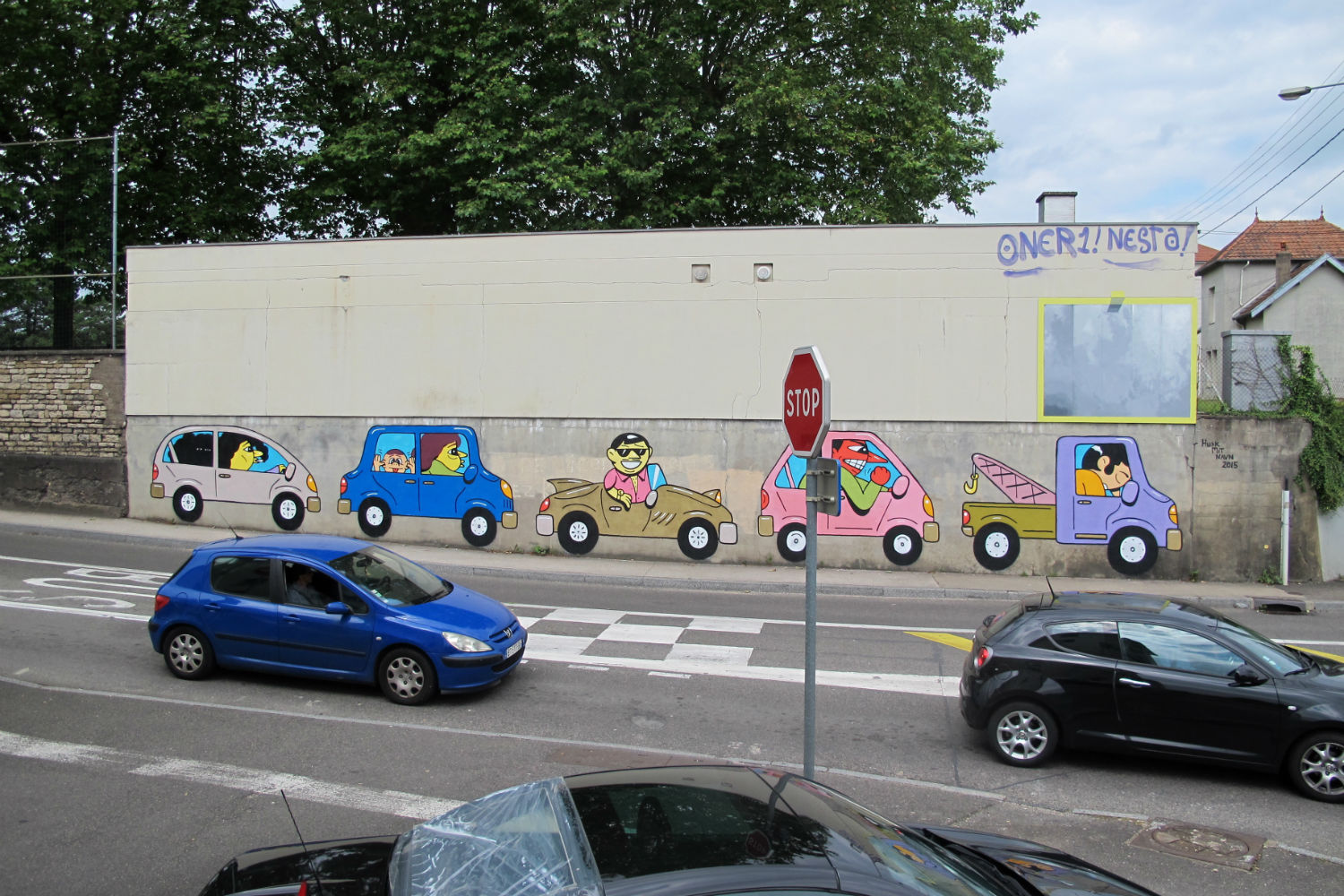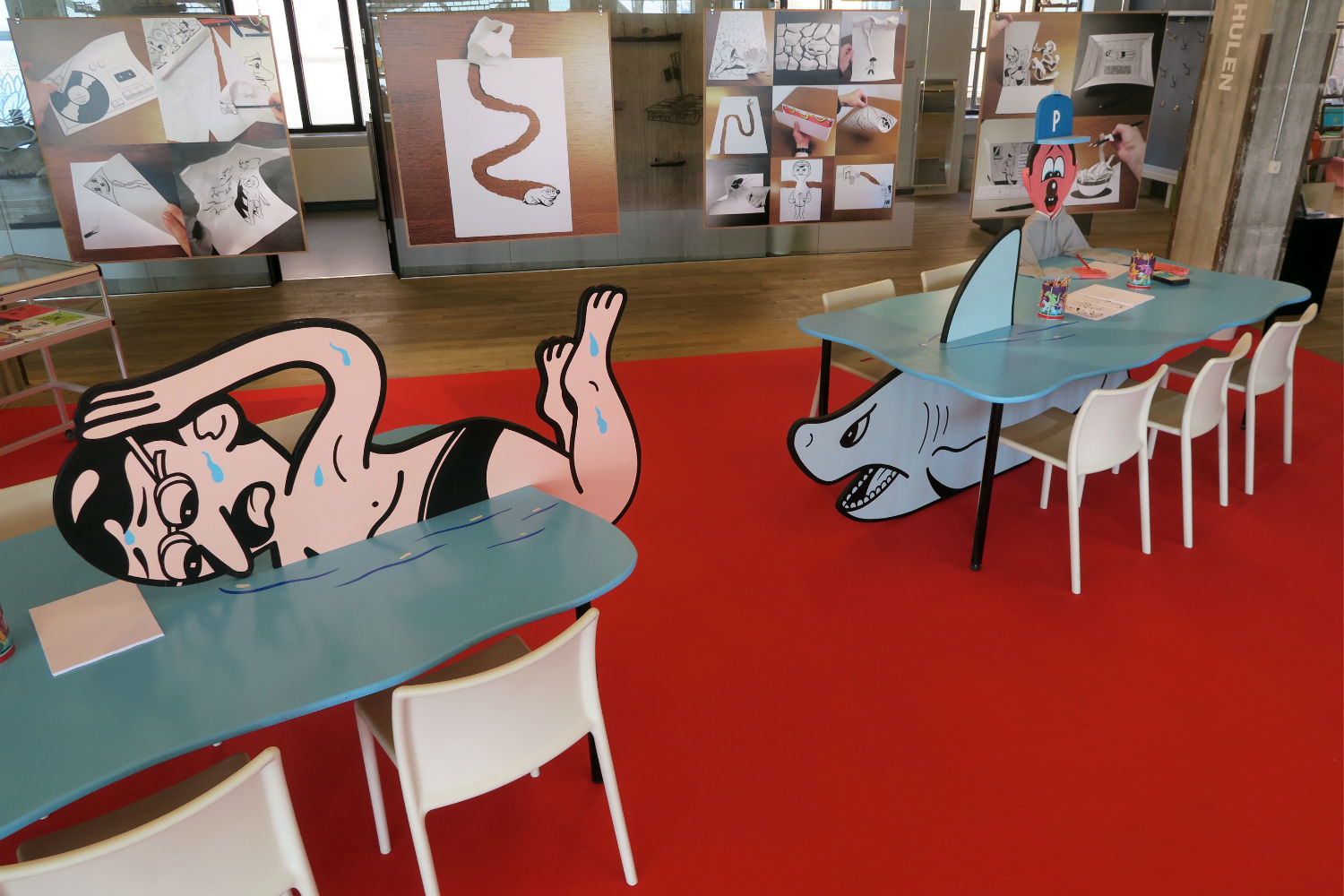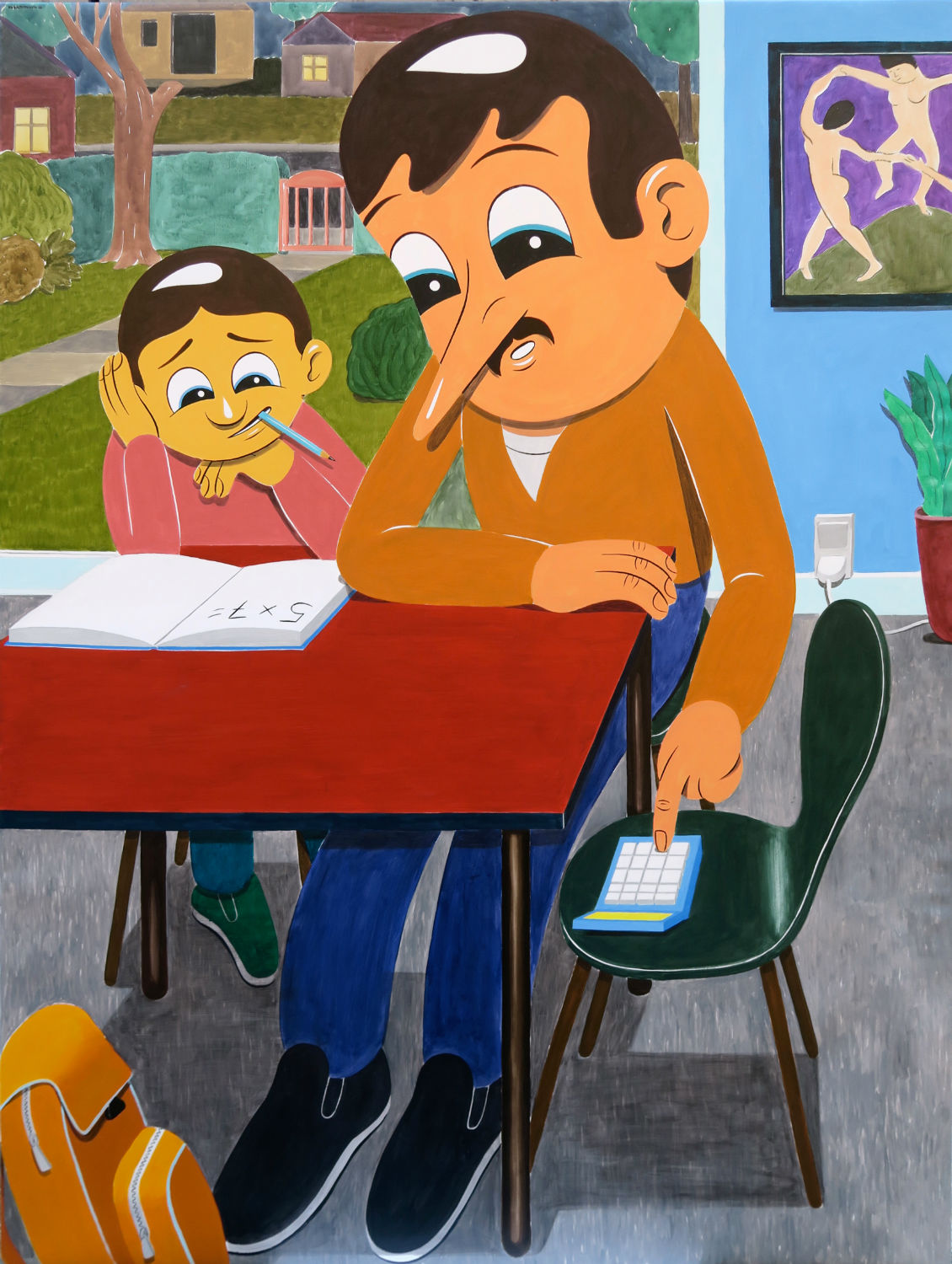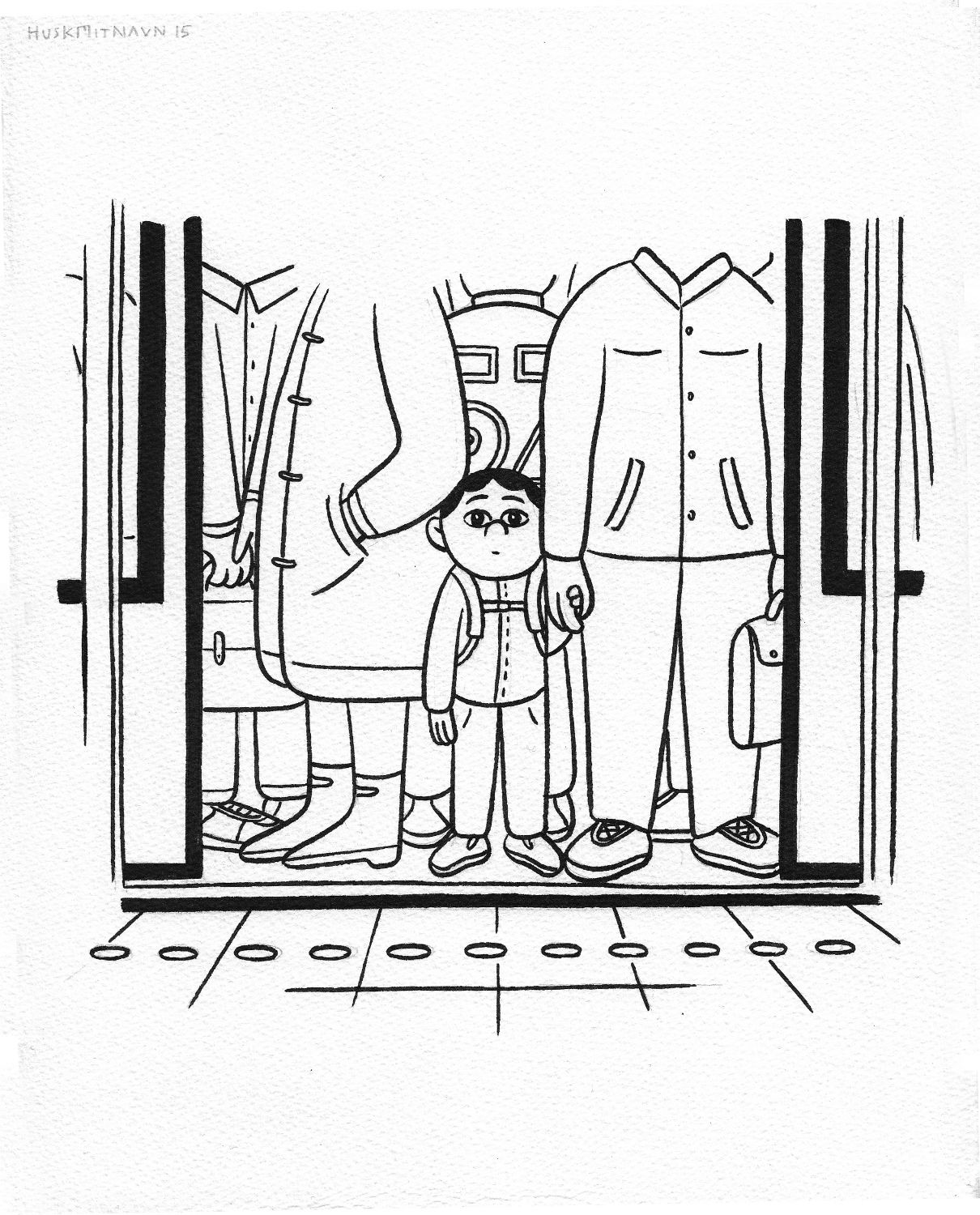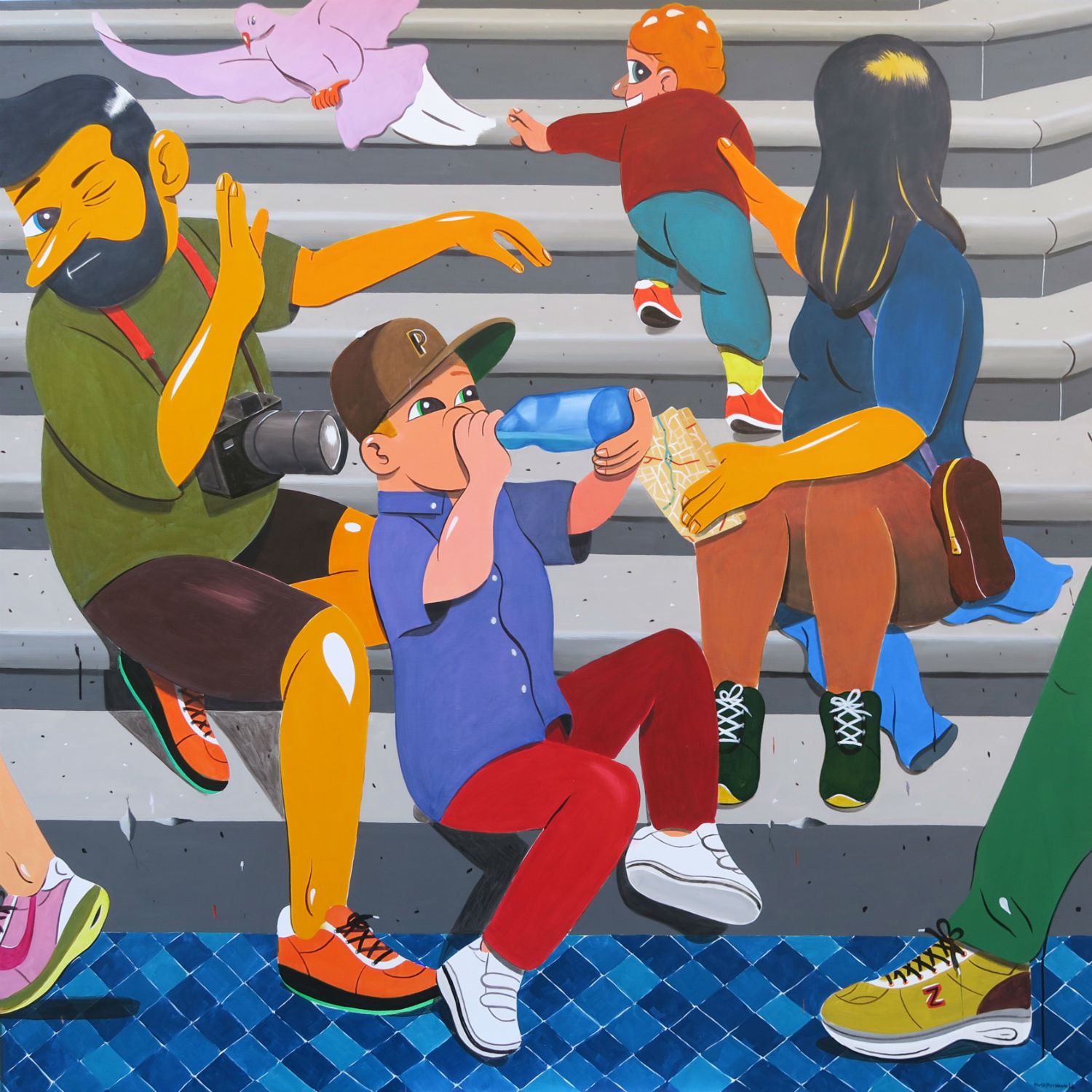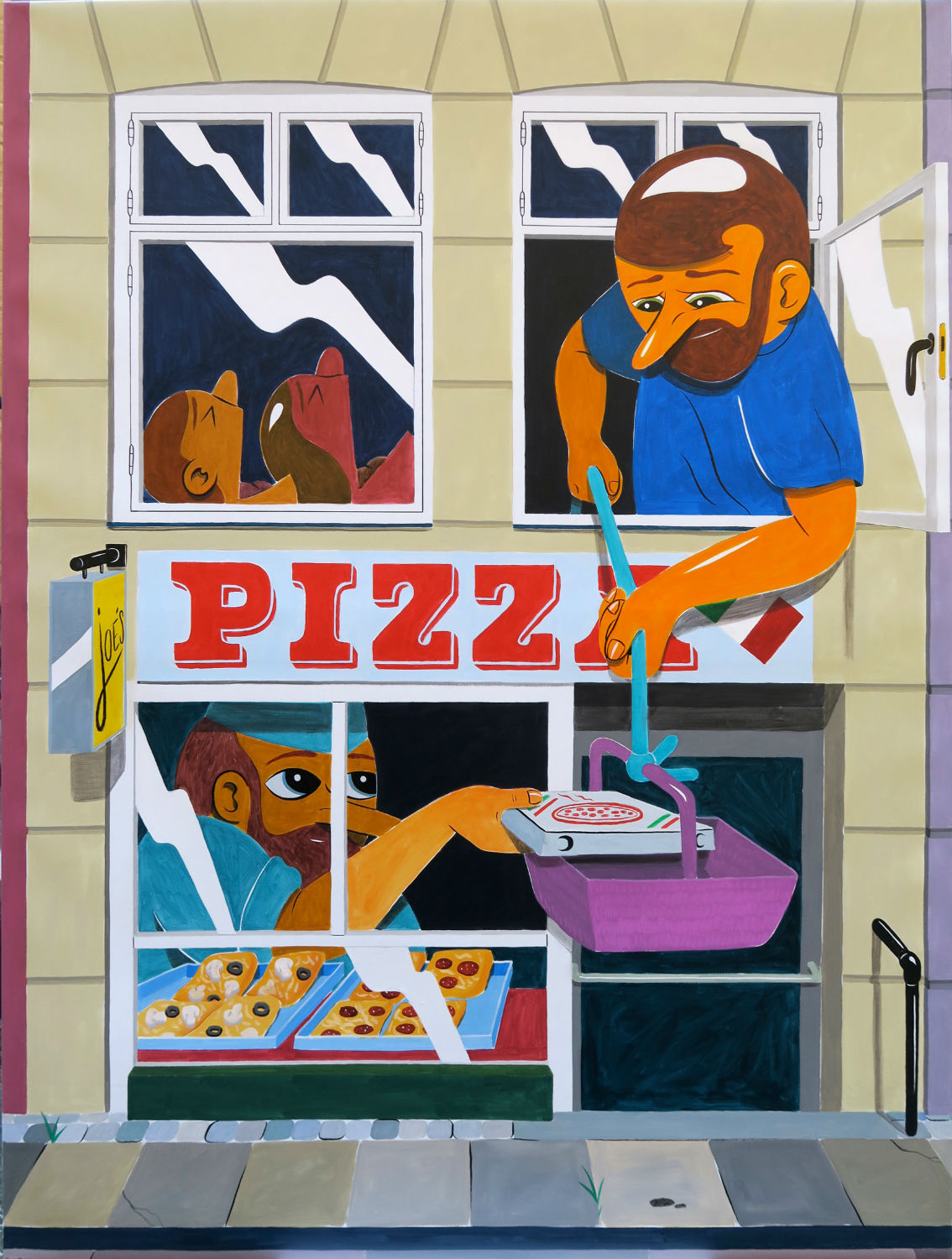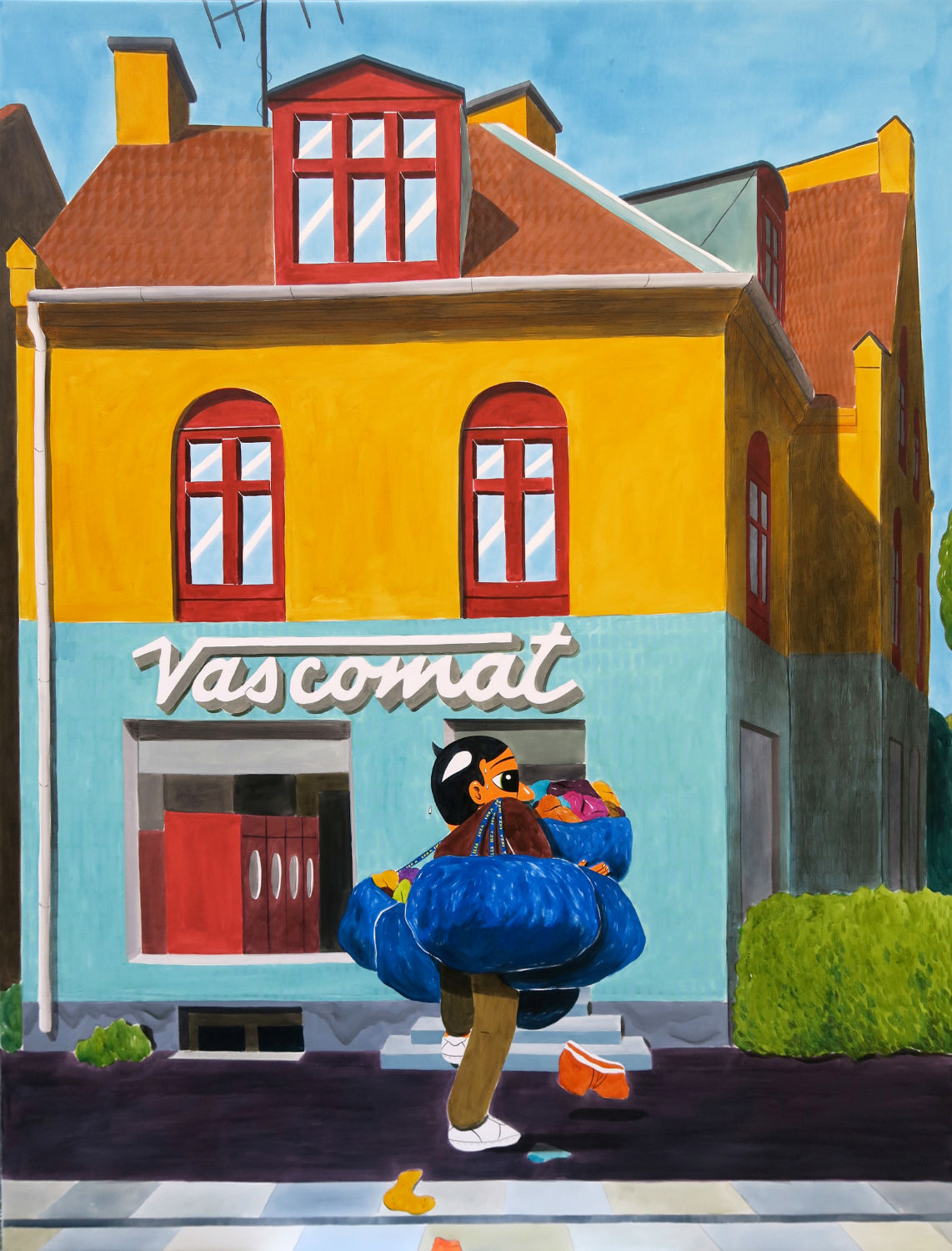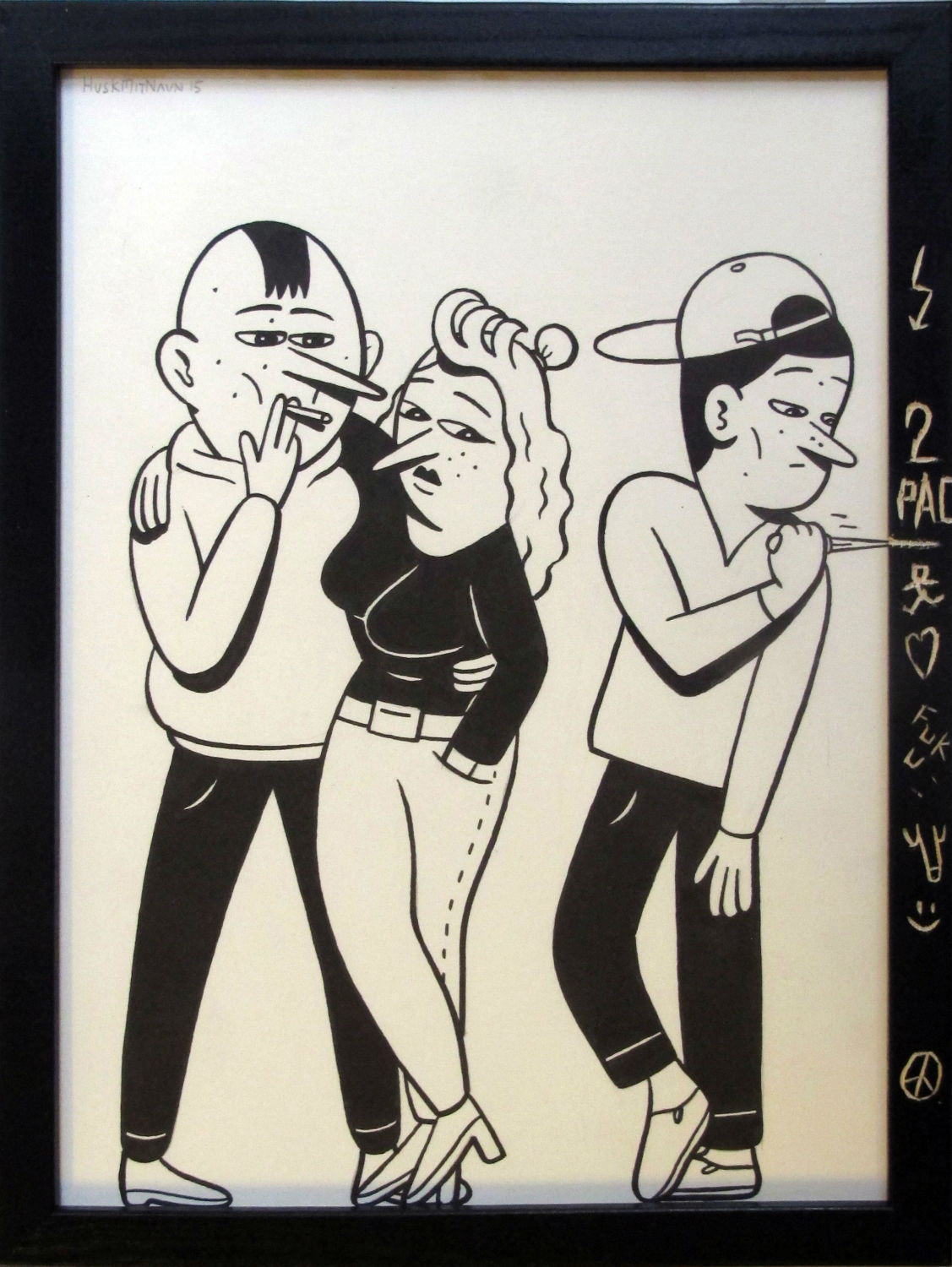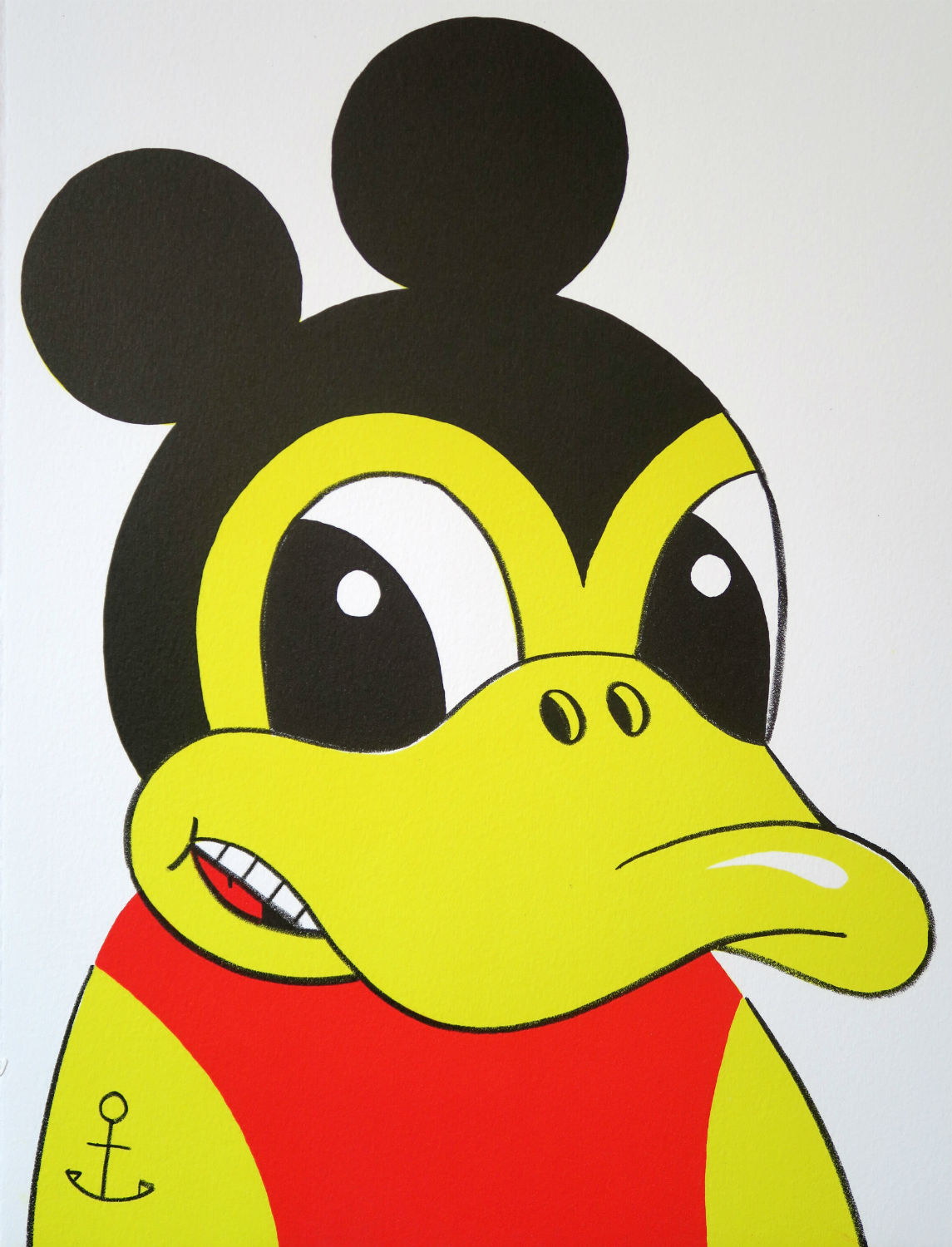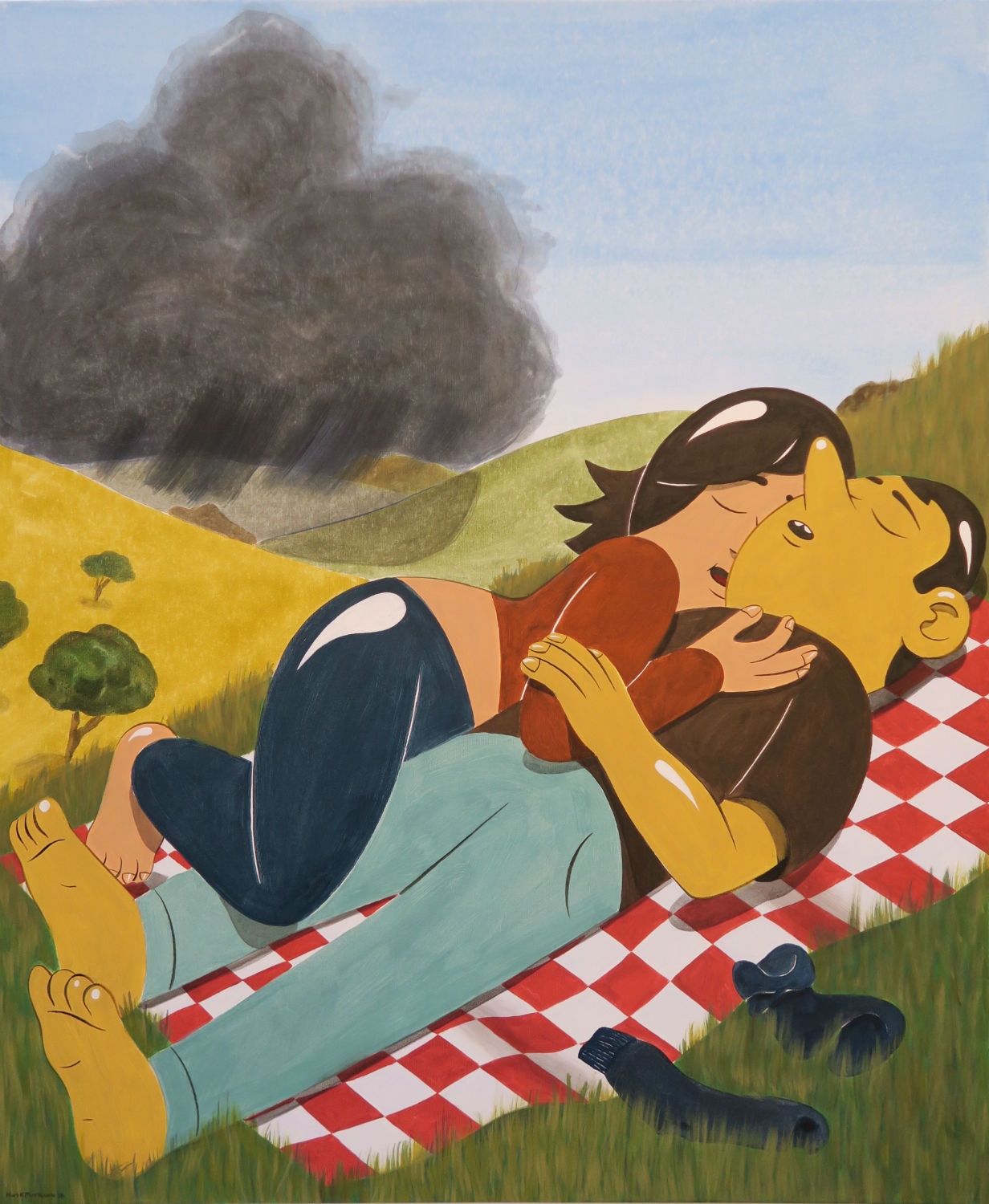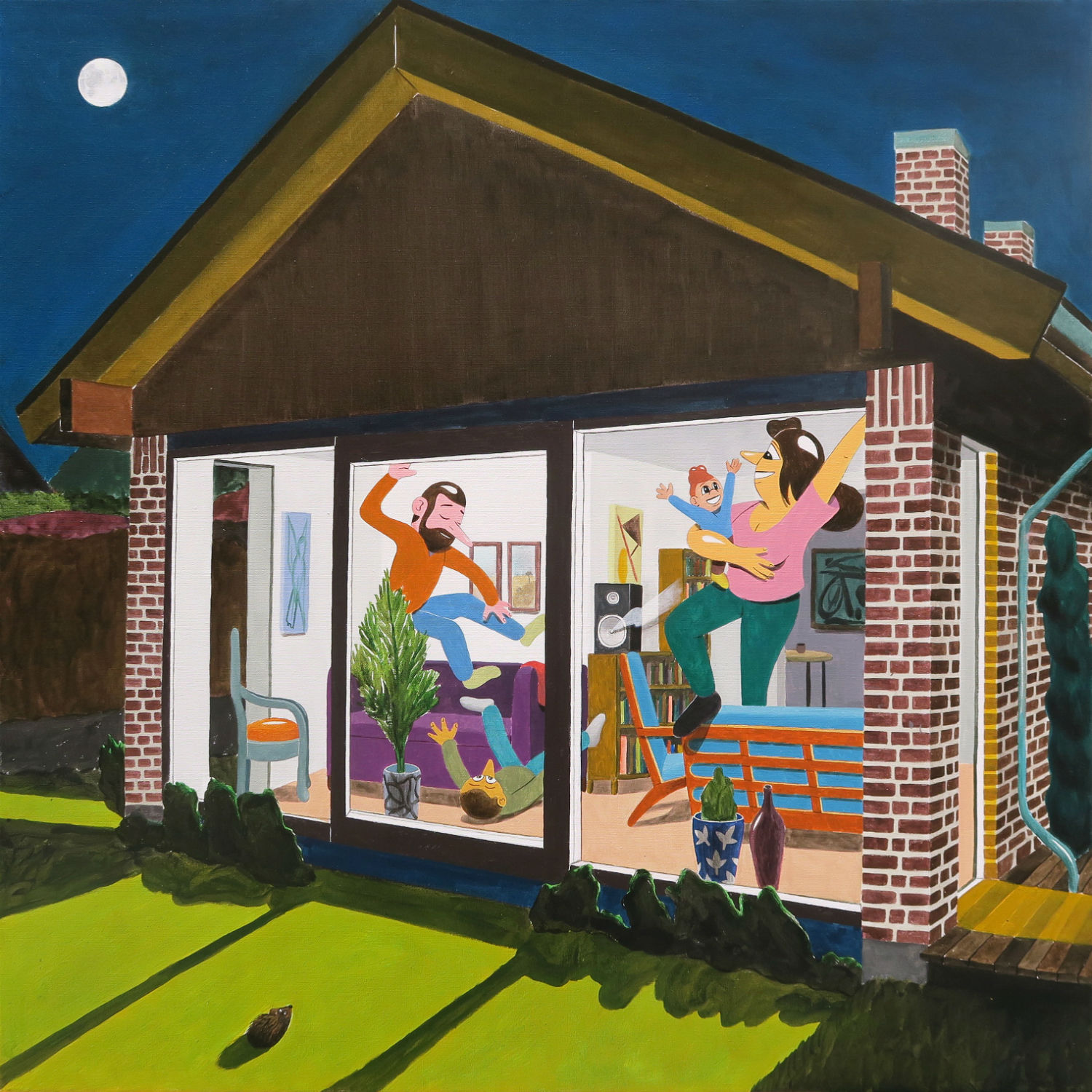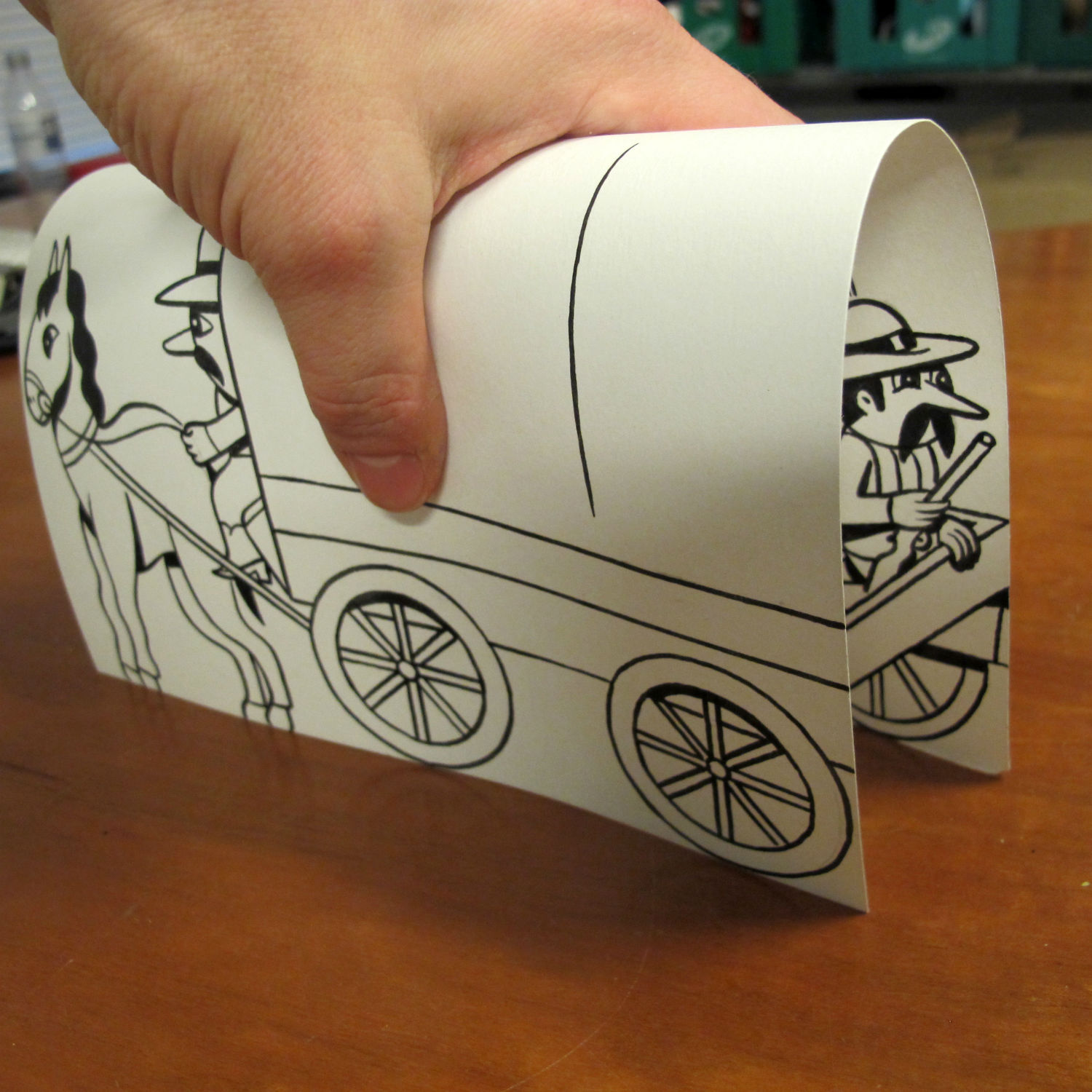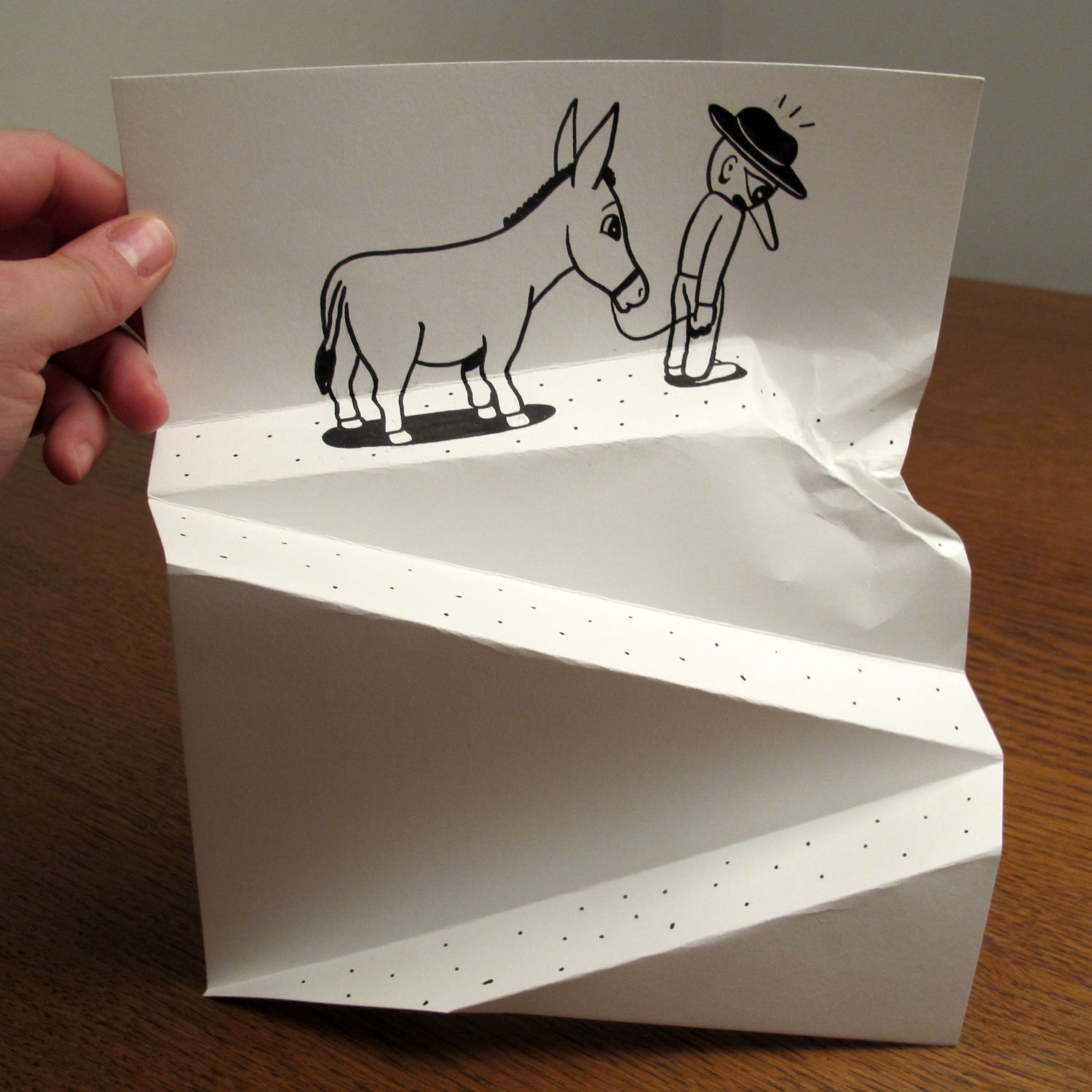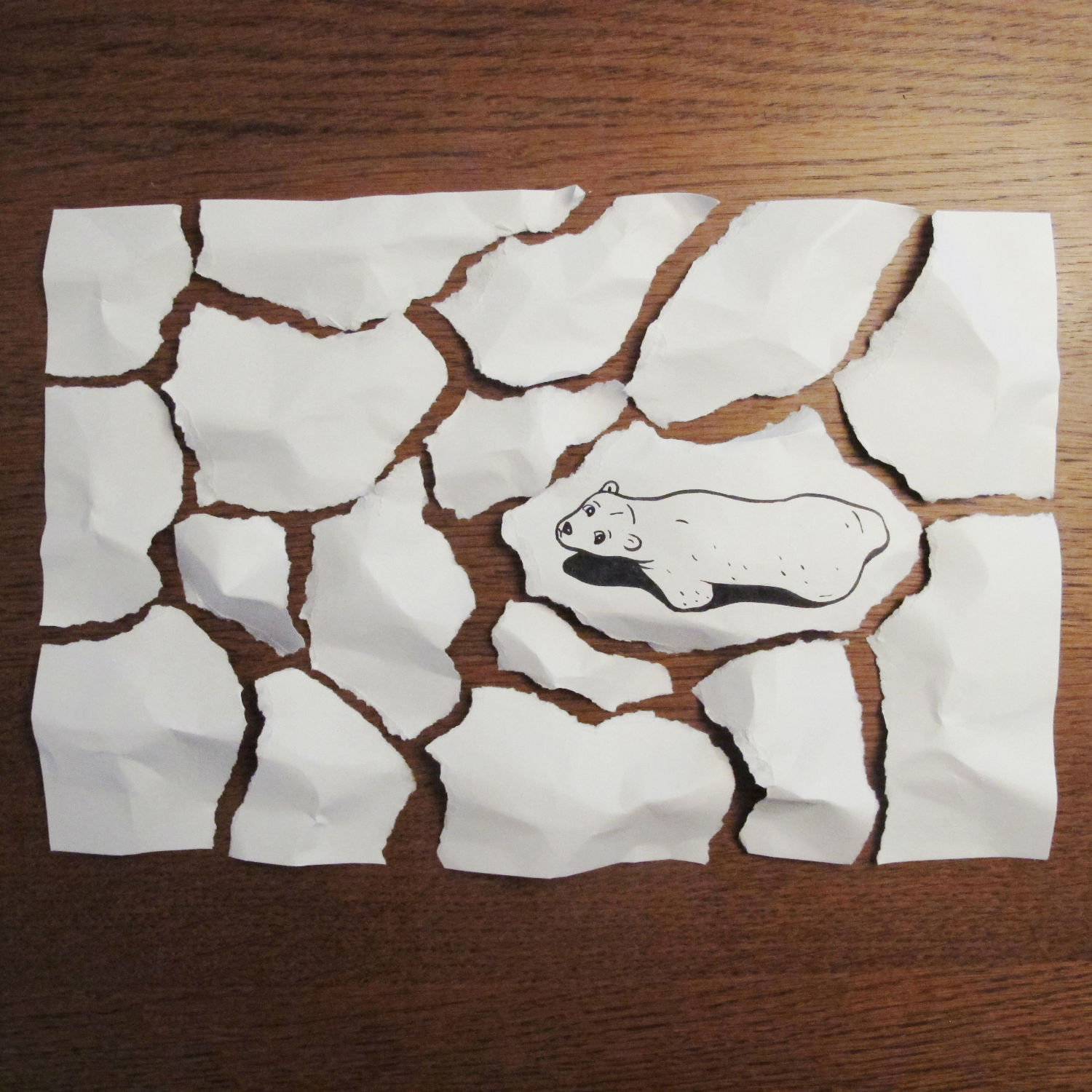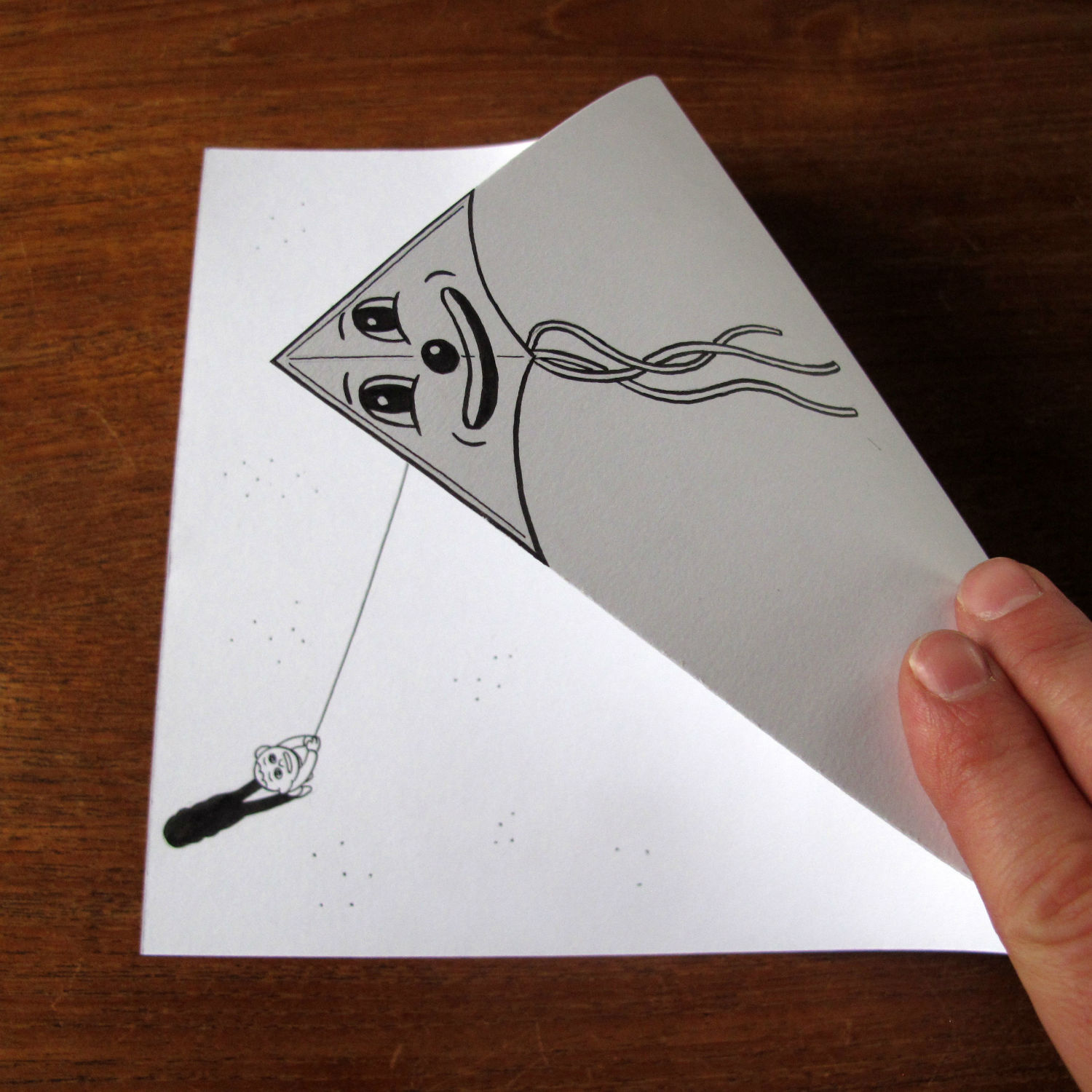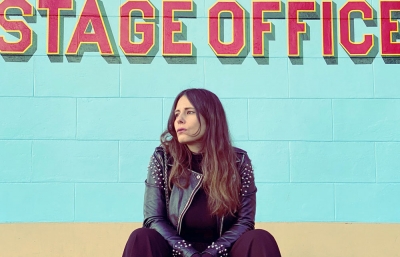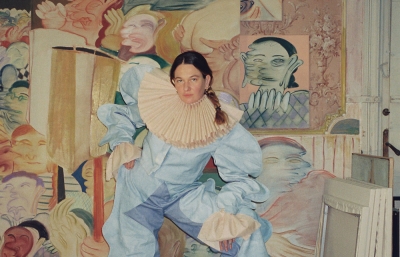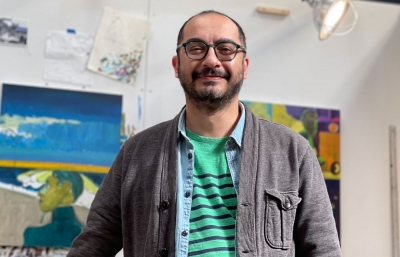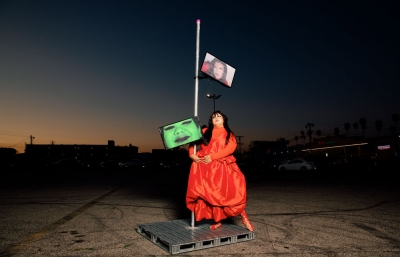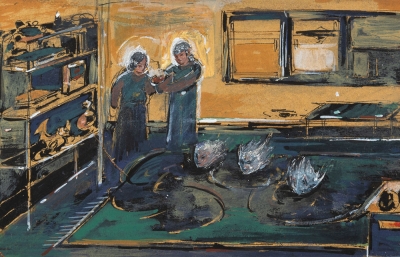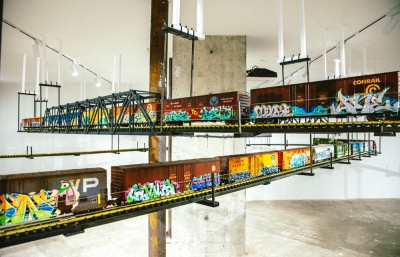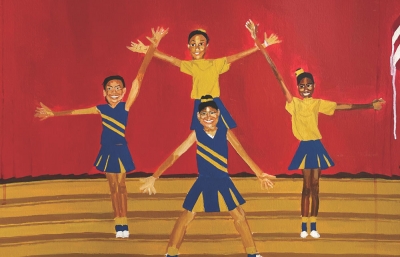Beyond the shapes and colors that feel honest and right, there is an urge to channel empathy within the interludes of human experience. Denmark’s HuskMitNavn (RememberMyName) seems to have cracked the code: unique characters share genuine moments in a common universe with tangible sensibilities.
Scenarios as clever as they are mundane, translating comfortably from ink-on-paper to sprawling city murals, sculpture, and beyond. I recently caught up with HMN in his Copenhagen studio, where he perpetuates his imaginative brand of world-building.
Read this feature and more in the December 2016 issue of Juxtapoz Magazine.
Aesop Rock: What made you start drawing, and what were the first things you remember trying to emulate—your early influences?
HuskMitNavn: Like most kids, I started drawing at an early age and soon discovered that, on paper, I could master the universe. Anything was possible. That kept me going. My dad used to buy me secondhand comics. He worked at night, and when I woke up in the morning he would put a new (old) comic book next to my cereal bowl. I never actually read them. I only looked at the pictures. It was mostly cartoons like Lucky Luke and Asterix, stuff that my father liked. His tastes became mine.
What was it that attracted you to graffiti?
I was nine when I first saw graffiti, in 1984, when it had just come to Denmark. At my school in the suburbs, the older kids started to tag the hallways, and whatever they did was obviously super cool. I was very much into Disney cartoons at that time, and graffiti was kind of a similar way of drawing; black outline and bright colors.
I know you studied to become an art teacher. Was that something you planned on doing had you not found success as a working artist?
No, not at all. The art teacher school taught me a lot about what not to do. All my teachers there told me that you couldn’t make a living as an artist. I decided to do the opposite of what they had done. And here I am, making a living. So, in a way, it was a great education, though I didn’t feel like I got educated to be an art teacher. I got educated to do what I’m actually doing now. Me, me, me.

At what age did you start feeling like you were really finding your voice and style? Do you remember what you were working on at the time?
Fairly late. Around the time I turned 25, I found I could use my graffiti characters when I made more traditional art. Up until then, I thought real art should look like Jackson Pollock or Picasso, but one day I found a book about Keith Haring, and all of a sudden it all fell into place. I just had to make my art more fun and not think about whether or not it was “real art.” I was never the most active graffiti writer, and my life had no clear direction in my early twenties. When I discovered Keith Haring and saw how much he managed to produce before he died at 31, I immediately decided to become more organized. I wanted to be the guy that people looked at and thought, "How does he find the time to paint all that and come up with all of those ideas?" That is still what drives me.
I’ve seen graffiti artists transition into galleries and learn to monetize their work with varying degrees of success. Beyond stepping outside of the “purist” aspects of graffiti culture, there is the challenge of making your images work in new mediums—something often easier said than done. You seem to adapt effortlessly from wall to canvas, paper, sculpture, and even pieces specifically designed for social media. Was there ever a definitive point at which you decided you needed to think about a wider audience?
Variation is very important to me, I have always been curious. It's not fun to stay in the studio all year or only paint murals. My way of drawing is like vector graphics, I try to draw a line that can work on a piece of paper, a five-story building, or a coffee cup. By drawing on everything possible, I reach a wider audience, and I don't care if it is a child, an art collector or a bus driver. They all count. Working with a variety of projects is also my safety net. If my gallery closes, I'm not 100% depending on it. And if people stop buying something, I make a lot of different stuff, too.
Do you have a cast of repeating characters that show up in multiple paintings, or is every one unique to the piece?
My characters do look related. They are part of the same family but there are no twins. I hate to draw the same character twice. It takes too much time to get the details right.
What are you able to find when using color that is not conveyed in your black-and-white work?
I think large-scale artworks need some color. In Denmark, we have a lot of cool, minimalistic architecture and furniture design. It can be a bit cold to look at (like the weather), and I like to surround myself with colors.
When I paint canvases, I use fluid acrylic paint that you can also use for airbrush painting. It dries really quickly and contains a lot of pigment. That allows me to work fast. I want to finish the painting the same day I start it (like a graffiti piece), but big paintings usually take between two to four days to paint. My painting technique and line is a bit more loose on a canvas than on my drawings. I don't want it to look like a big, flat screen print, but more a traditional oil painting with texture.
Did you ever find that certain things work on walls that wouldn’t work on canvas or paper?
Working with the same media all the time is not very challenging. That’s why I started to fold my drawings instead of just staring at the flat piece of paper day in and day out. A blank canvas is a very dead thing compared to an old brick wall. Paintings are a bit more tough to make than a drawing or a wall. But I don't have a favorite media. If I'm tired, I do quick black-and-white drawings or watch YouTube, and if I feel full of energy, I paint.
When did the paper tearing and folding begin, and was there one piece that made you realize there was something more to explore there?
I'm always looking for something to make that is impossible to sell. It's a way for me to feel free to make experiments. It's important to keep your eyes open and see what is right there in front of you. That's how I get a lot of my ideas. I slowly discovered the possibilities of tearing and folding paper. I look at the paper and think, what does it look like? A white sheet on a bed, a piece of chewing gum—and what if I rip it in half and fold the pieces, then what? And so on...

They are minimal, but simultaneously very clever, and seemingly would require a different type of thinking. How much planning goes into making these folded pieces work?
Thank you. I have fun with it. Sometimes I just sit and fold a piece of paper until an image appears, and sometimes I come up with the idea first. Perhaps I see a guy falling on his bike and think, “Can I recreate that situation by folding the paper somehow?” It takes me somewhere between 20 minutes and an hour and a half to make a drawing, from idea to photo.
Can you foresee them getting larger, like more pieces of paper? Is part of the charm for you that they are self-contained, single-paper creations?
I don't know where it will go. Right now, I like that it’s an ordinary piece of paper and a pen. No tape or glue. It's a tight concept that is easy for people to understand, and easy for me to work with. It also means I can make the drawings wherever I go.
I’ve seen you post pieces that involve a mobile or video element designed specifically for the short-video format catered to by social media, for example, the noodle being slurped. Is it odd to design art that lives on these somewhat temporary social media feeds?
Before the internet, everything was slow. You were depending on certain people and media to discover you. Now you can skip the middlemen. I try to embrace all those new possibilities. It's like playing when I was a kid. I didn’t do that for a specific reason, I was just playing.
Do you view the disposable aspect of social media as positive or negative in regards to your artwork?
It’s just like graffiti, so I'm used to it. The stuff that you create disappears again, and then it makes space for new stuff. I like that. It pushes me forward. I don’t surround myself with my own drawings at home either. It's the process that counts for me, not looking endlessly at the result.
There are also pieces that benefit from being a photo of the paper, as opposed to a direct scan of the drawing. For you, is the drawing the completed piece, or the photo of the drawing?
In the case of my ripped and folded paper drawings, the photo is the complete piece. People ask me all the time if they can buy them. I always say no. The drawings are not meant to be framed. But perhaps one day I will find a way to combine the two things.

Are you able to display these photographed pieces within your shows, or is that stuff you do mostly with social media in mind?
I have done a couple of drawing rooms at my latest shows with these photos on the wall, but I don't sell them. They’re just there as inspiration. The photos are made for social media and this summer, my book called Papirarbejde (Paperworks) was published with some of the best photos in it.
Does the world of digital drawing/painting attract you at all, or is there a need for the physicality of traditional materials?
It can be very boring filling in a lot of colors on a drawing. Sometimes I just wish I could do it on a computer. I think I will do the colors on the computer if I do more children's books in the future, though I don't think I would ever show digital drawings in a show. But ask me again in five years.
Describe the process of deciding on your subjects. What is most important for you to capture within these images?
When I draw people in different situations, I want the audience to recognize the situation and themselves in the drawing. I want people to think, “I'm not the only fool on this planet,” when they look at my art. It's nice not to feel alone.
Can you tell me about including text in some of your work—is that a decision made as the piece develops?
I make the text first and then the drawing. The text comes from a brainstorm on a piece of paper. I write whatever comes to mind until I find something useful. Before I sit down and work on a piece of art, I decide on what kind of piece I want to create, if it's going to be a drawing, painting or something else
How important has comic art been to your development?
Between 2003 and 2012, I did a weekly one-panel comic for a national Danish newspaper. I use that experience when I make drawings today. Today it's important for me not to think about whether it’s a comic, a piece of art, or a decoration that I'm making. If it's fun or if it works as an image, I draw it.
How has becoming a father altered your work, if at all?
Everything changes when you have kids. I have less time to work and have had to come up with a bunch of ideas on how to work faster. I also move in much smaller circles now. My studio and my home are basically where I spend 95% of my time. Family life is super intense but also a good place to find inspiration. Kids make you crazy like Van Gogh (still got both my ears, though).
In your studio, are you listening to music? Taking in movies, TV, or podcasts?
When I'm working on new ideas, I can only listen to music. If it's talk radio, I can't concentrate. Depressing and melancholic music is good to listen to when you draw funny stuff. It keeps you balanced. I like New Order, Damon Albarn, The Cure, The Stone Roses and stuff like that, plus a bit of old soul music. If I'm painting or drawing, I usually listen to podcasts like This American Life or Danish talk radio. I would feel very isolated if I did not have my radio. Sometimes my studio feels like a hospital bed. I'm stuck there thinking about the world outside my window.
You’ve remained largely anonymous, something that seemingly stems from graffiti. Have you ever found this anonymity to work against you in any way as you continue to explore new outlets and business ventures? Have you lost any opportunities because of it?
I’ve had to decline some TV interviews and workshops, but nothing I regret. I feel I can do almost everything I want and relax when I get home from work. People with famous faces are never completely off from work. I use the people I see around me as inspiration. It's very hard to get a good look at the world if it's staring back at you funny. That's why I stay anonymous.
----
Originally published in the December 2016 issue of Juxtapoz Magazine, on newsstands worldwide and in our web store.

